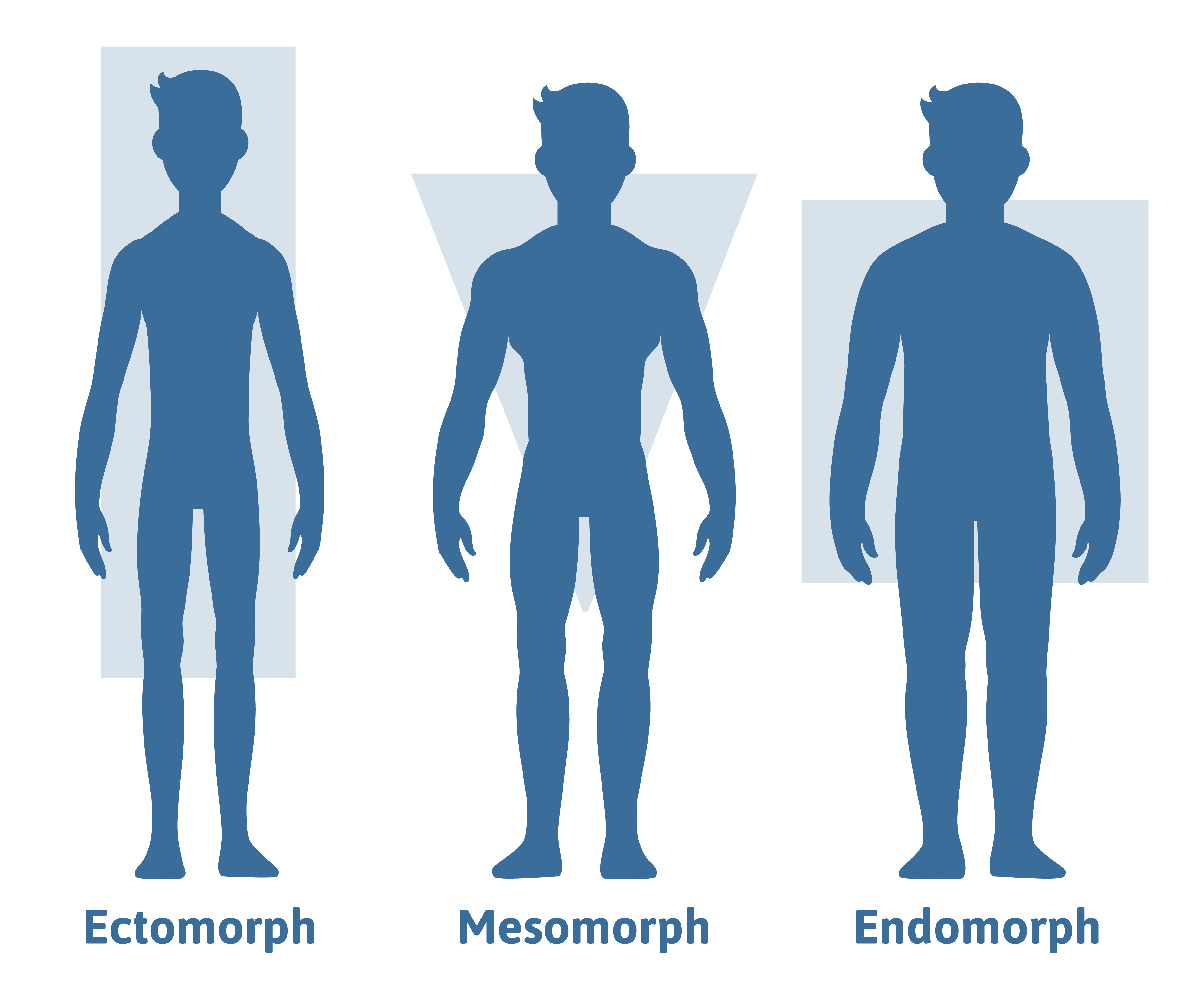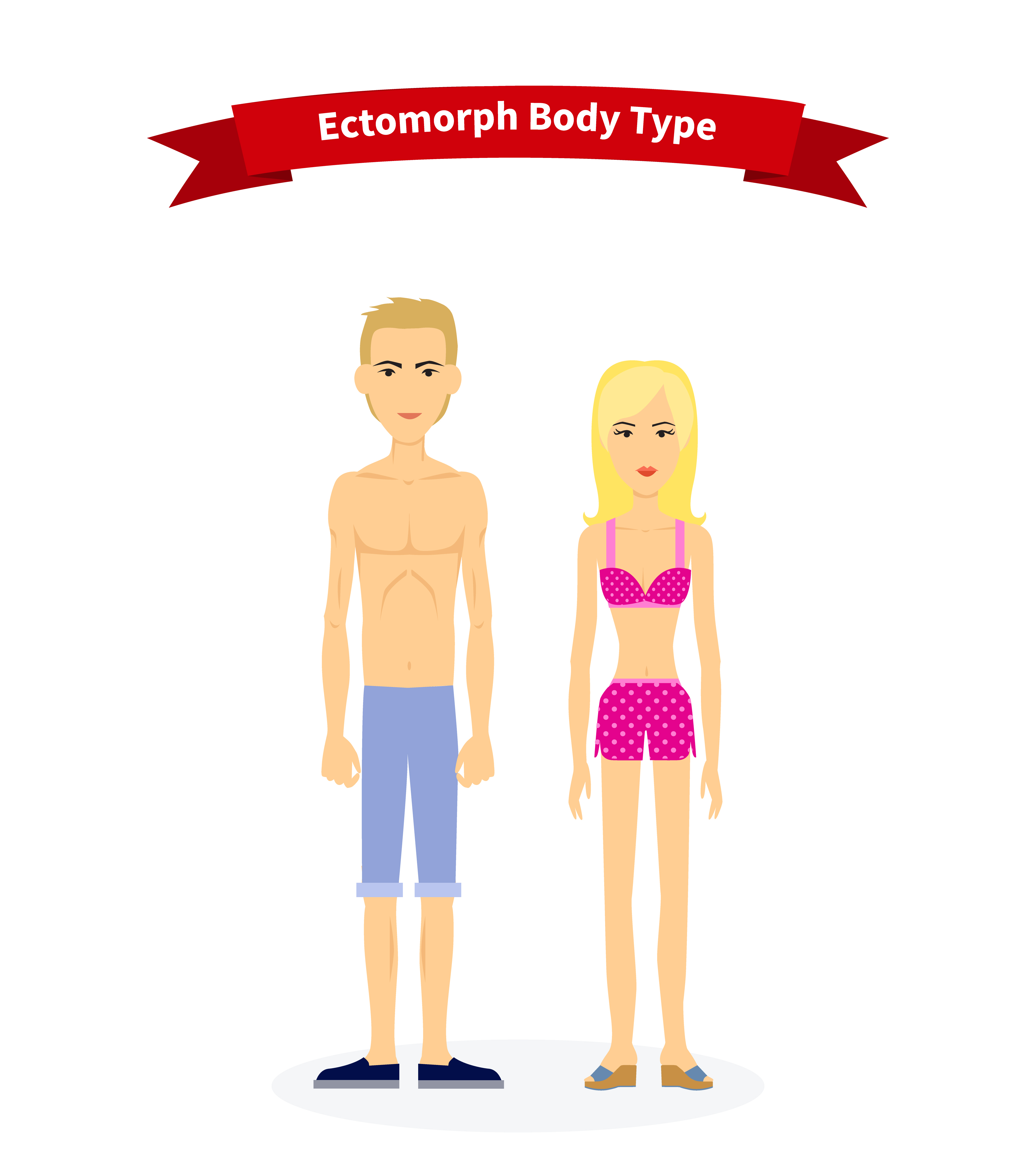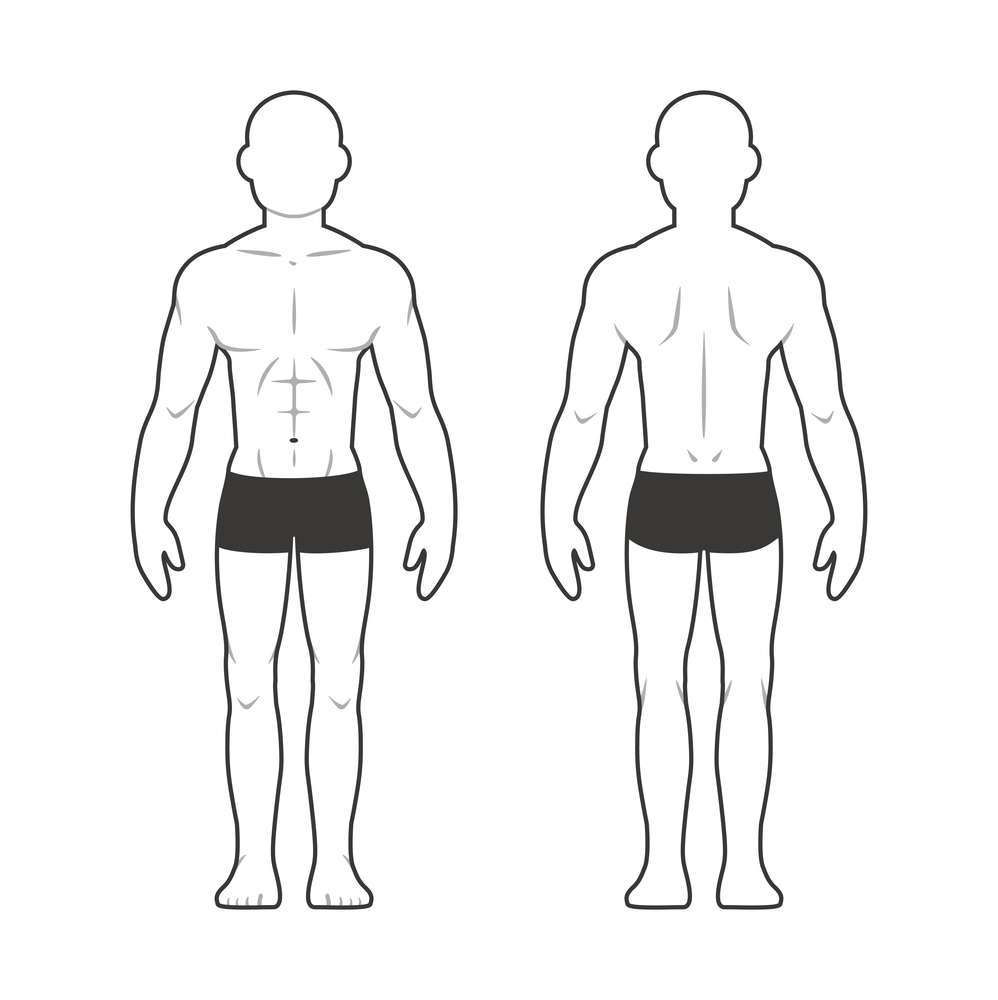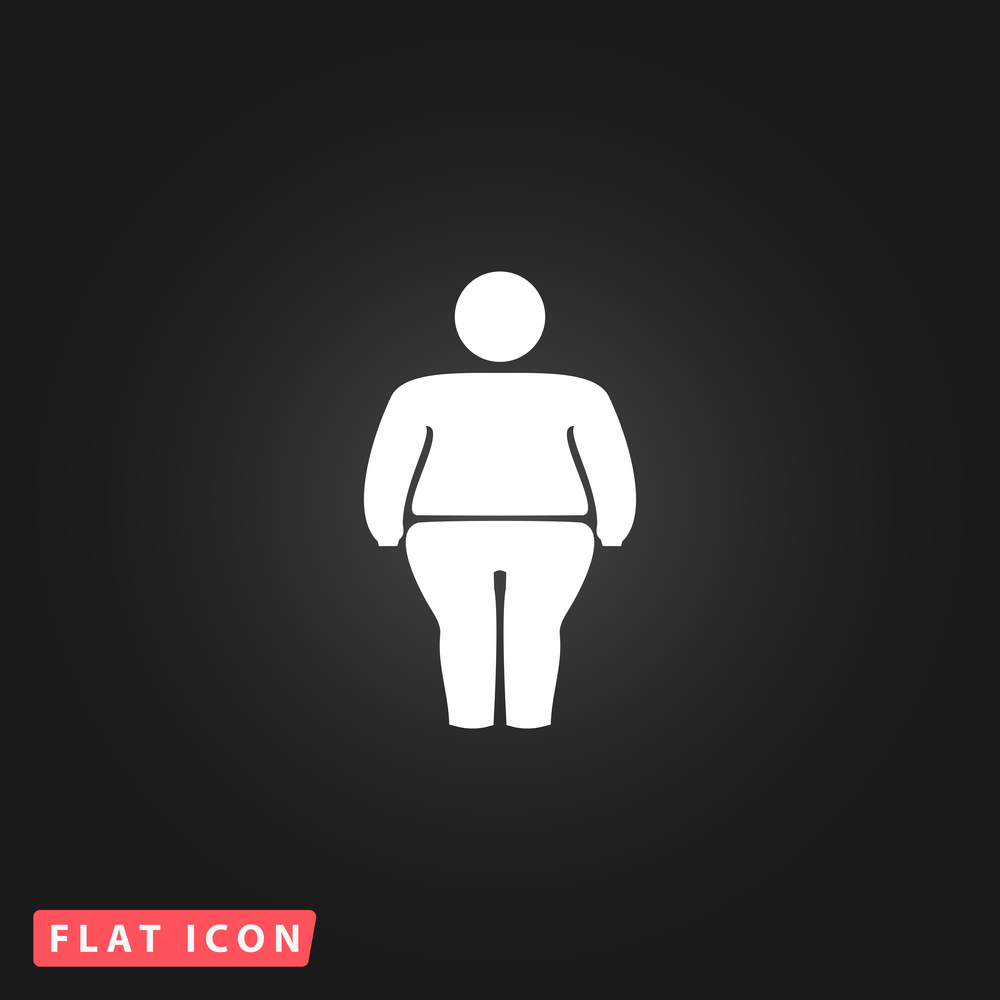
No two people are the same. That’s why you need to eat and train specific to your goals and body type. We’ve got the info on the different body types and how to train and eat for them.
Everyone is unique.
We see this every day all around. Some people have blue eyes while others have green eyes. Some have brown hair while others have blonde. No two people are exactly the same, and this is true, too, for how quickly people store fat and how quickly people shed fat. Fitness junkies are always talking about how vital is it to know your body because when you know your body, you’ll get the best results. You know what workout provides results and what workout does not.
Maybe you are someone who does 45 minutes of cardio and very little weight lifting. Or maybe you do 15 minutes of cardio and an hour of weightlifting. Just because you and your best friend work out together doesn’t mean that you are getting the same results. It all depends on your body type.
That is why we have broken it down for you so that you know how to eat and train according to your own unique body type.
This Is A Somatotype
Your genetics are what predispose you towards one of the three different body somatotypes. A somatotype is just a category that people are assigned to according to which physique their body conforms to. There are three types of somatotypes. They are the ectomorph, mesomorph, and endomorph.
In the 1940s, Dr. William Sheldon, an American psychologist, developed a theory that there are three basic body types, or stereotypes, that are based on the three tissue layers. He also studied how each one of those body types are linked with personality traits.
In the end, he came to a few conclusions. He found that endomorphy focuses on the digestive system, mostly the stomach. Mesomorphy focuses on musculature and the circulatory system. Meanwhile, ectomorphy focuses on the nervous system and the brain.

Are You An Ectomorph?
An ectomorph is naturally thin. They tend to have small bone size, a shorter upper body, longer arms, and legs, as well as narrow feet and hands. They also tend to have little fat storage. In fact, they sometimes struggle gaining weight and usually have a small amount of muscle mass along with a very high metabolism. Dr. Sheldon associated this body type with specific personality traits. These traits include being self-conscious, introverted, inhibited, socially anxious, artistic and emotionally restrained.
If an ectomorph wants to build muscle, they will need to increase their daily carb intake and overall caloric intake. It is hard for an ectomorph to gain weight because their metabolism turns food into energy quickly and easily. It is advised that an ectomorph should consume 50% carbs, 30% proteins, and 20% fats.
Their training will also be hard.
Why?
They won’t be able to do long, endurance sessions because their body will burn up so much energy during the workout. Most will have to limit their training sessions to under an hour. In that hour, they should focus on doing compound movements that build more muscle mass and increase overall strength, and heavy lifting, since they need lots of strength (opt for 6 to 10 reps per set of heavy/moderate weights).
They should also think about reducing cardio. Cardio is obviously very important, but to save energy for the more significant part of the workout an ectomorph should reduce their cardio time. After all, their goal is to gain weight and muscle.
Ectomorphs should aim to eat a lot of carbs during and after their workout. Do so at these times more than any other time of the day. They should try to consume starchy, whole grain, unprocessed carbs at every other meal. They should also eat fruits and veggies at every meal.
Proteins and healthy fats are also great during meals. They may want to consider investing in some high-calorie weight gainer powder.
Why?
These could do wonders on them. They should plan to eat more frequently. It would be a good idea to eat six to eight meals a day that are spread out. Don’t forget that breakfast is the most important. It should also be the largest meal of an ectomorph’s day – complete with complex carbs and lots of protein.

Are You A Mesomorph?
A mesomorph turns food into muscle very easily. They tend to have a hard, muscular body. They needs lots of protein and can handle a moderate amount of carbs, but if they consume too many that will be turned into fat much easier than an ectomorph. Dr. Sheldon associated this body type with specific personality traits. These include being adventurous, having a desire for power, being assertive and bold with a zest for physical activity, competitive and loving risks and chance.
The recommended macronutrient ratio for a mesomorph who wants to build muscle is: 40% carbs, 40% protein, and 20% fat. If a mesomorph is trying to lose fat, then they should strive to consume 30% carbs, 40% protein, and 30% fat.
As we said before, building muscle is fairly easy for a mesomorph. They should, however, include different types of exercises to develop proportion to their muscle mass instead of just being muscular and boxy. They should mix compound and isolation movements. In other words, they should put an emphasis on mass, quality, details and proportion.
They should also perform longer workout sessions because they have more strength and energy than an ectomorph. Lastly, they should have moderate cardio sessions. These are very important to the mesomorph. As such, the number of sessions should vary. With that said, it should be somewhere between one and four per week.
Mesomorphs usually do best on a mixed diet. Low-fat protein foods like Greek yogurt, eggs and seafood will encourage muscle growth at the gym. They should also include complex carbs like spinach, green veggies, whole grain foods and low-sugar fruits to get them through that killer workout.
They might want to try high-fiber foods such as beans that will make them feel fuller longer. Because mesomorphs have a high carb tolerance, they should try eating carbs and starchy foods in the morning, as well as after a workout. With that said, they should stick to proteins, fruits, veggies, and nuts the rest of the time.

Are You An Endomorph?
An endomorph has a much slower metabolism than the other two body types. They have a much larger amount of fat cells. But, if they watch what they eat, they have the ability to build a lot of muscle. So they should limit their carb intake. Dr. Sheldon associated this body type with specific personality traits. These traits include having a love of comfort, a need for affection, sociable, well humored, relaxed and tolerant.
Because endomorphs have the ability to gain more fat than the other two, they should keep their carb intake to a minimum. They are, however, very able to build a lot of muscle. As a result, their recommended macronutrient intake for wanting to build muscle should be: 30% carbs, 50% protein, and 20% fat. If an endomorph wants to lose fat, they should keep it to: 20% carbs, 50% protein, and 30% fat.
Of course, the endomorph will usually be concerned with weight loss. That is why they should keep to a strict nutrition plan as well as a strict workout. Their workout should include compound movements with short rests that will build more muscle and burn lots of calories. Even those short rests will help burn calories. Their rep range should be between 8 and 15 reps.
They should do two different superset exercises in a row. For example, they could do a bench press and a pull-up. These will work to destroy calories. They should also do lots and lots of cardio. The cardio should be the meat of their workout.
Why?
Simple, it will help burn extra calories.
The best nutrition plan for endomorphs usually consists of higher protein content. They should tend to avoid high carbs and starchy foods, especially if it isn’t during or after a workout. Stick to proteins, veggies and fruits for the rest of the time. Their body will thank them for it.
These Are The Macronutrients
Earlier, we mentioned macronutrients, and you maybe be wondering what exactly are macronutrients. Every calorie you eat is made up of macronutrients. You may not know that vitamins, sodium and minerals are calorie free micronutrients. Macronutrients differ because they have calories.
You can budget four calories for every gram of protein, another four calories for every gram of carb, nine calories for a gram of fat and seven calories for every gram of alcohol. Needless to say, you need proteins, carbs and fats for your body to function at prime capacity.
Carbs act as the fuel that runs that machine that is your body. They also provide you with fiber. Carbs are broken into two specific types: The first is known as simple carbs and the second is known as complex carbs. The difference is in how they absorb sugar and how fast they break down.
Protein is vital for your body. It helps to build and repair bones, blood, cartilage and skin. If your body doesn’t get enough protein, you simply won’t be able to build muscle on your frame. A recent study published by the American Journal of Clinical Nutrition discovered that those who follow high-protein diets are more likely to burn more calories than people who eat low protein meals. Researchers also found that people who ate higher-protein diets kept more lean muscle on their frames, as they burned fat.
Speaking of fat, it isn’t something that people should be afraid of. In fact, fat is vital for a healthy body. There are good and bad fats. Trans fats and saturated fats are the bad fats. Examples of these include cheese, butter, and meats like beef, pork, and lamb. You can usually find trans fats in unhealthy foods like cream, baked goods, and margarine. The good fats are unsaturated and are vital for stronger bones, lower blood pressure and lower cholesterol. They also aid in mental function.
You can also replace bad fats with good fats like peanut butter, olive oil, and avocados. Polyunsaturated fats are great for your heart. You can find them in tuna, walnuts, corn oil and salmon. More great options include low-fat cheese, egg whites, and skim milk.
Conclusion
Getting to your ideal weight is not easy.
Why?
Partly because there is no one way to do it. Everyone is born with a different body type. There are so many factors when it comes to losing unwanted fat and gaining precious muscle.
Sadly, too many people waste time wishing for something they don’t have. Yes, it is important to set a goal for yourself and work hard to achieve that goal. But the grass is not always greener on the other side.
Someone who is stick skinny might wish they were a little more curvaceous. Of course, someone who is all buff and big might want to be toned and thin. Don’t focus on the other side. Water your own grass.
With dedication and hard work, you can have the body you want. It just takes some time and planning. Know your body type. This is a great starting point to reaching your goal. Once you know your body type you can then set a nutrition guide to follow and then start a workout routine that fits your needs. Success can be yours. You just have to want it bad enough to create a winning game plan and stick to it.
By Sarah Bayard
Latest posts by Sarah Bayard (see all)
- How Much Cardio Should I Do? - Jul 25, 2016
- Eat And Train According To Your Body Type - Jul 1, 2016
- How To Build Muscle Without Fat - Jun 24, 2016











[…] Here […]
[…] Source: Here […]